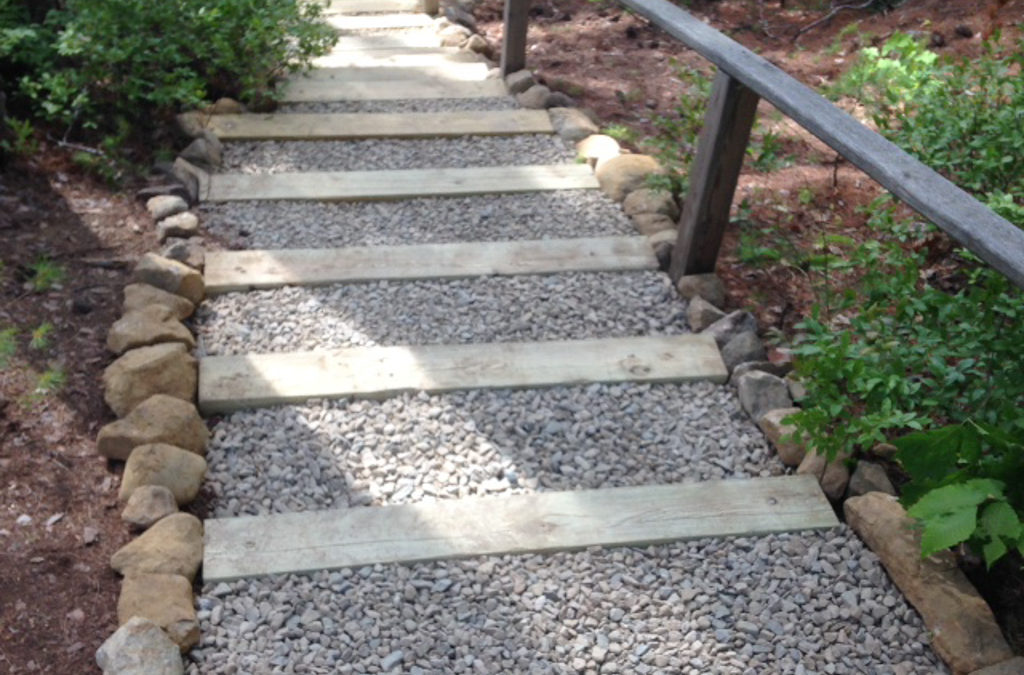Retrofitted Infiltration Steps
Retrofitting steps to control erosion on paths.
Purpose: Infiltration steps use crushed stone to slow down and infiltrate runoff. They are effective on moderate slopes, but consider building wooden stairways on 1:1 slopes (45°) or areas where rocks or surface roots make it difficult to set infiltration steps into the ground.
Note: Prior to installation, contact NH DES or Maine DEP, and your town’s Code Enforcement Officer to find out if permits are required. See our page with information about permitting.
Installation
Infiltration steps are steps built with timbers and backfilled with crushed stone or pea stone to help water soak into the ground. See separate factsheet for new infiltration step construction. Many existing timber steps can be retrofitted to create infiltration steps by making the following changes:
1. Remove several inches of soil from behind each step. Dispose of excavated soil in a place where it will not wash into the lake or other resource.
2. Line the bottom and sides of the excavated area with non-woven geotextile fabric. This felt- like fabric allows water to infiltrate but will separate the stone from the underlying soil.
3. Backfill the hole with washed 3⁄4” crushed stone or pea stone so that the tread is level or it just slightly slopes up to meet the above step. Pea stone is comfortable on bare feet but also usually more expensive. Paving stones can also be set into crushed stone to provide a smooth surface for bare feet – as long as ample crushed stone is exposed to allow infiltration.
4. If the timbers are not firmly secured, drill 1/2″ diameter holes, 6″ from the ends of each timber. Drive 1⁄2” diameter, 18” long steel rebar through the holes with a sledge hammer. For gentle slopes, wooden stakes or large rocks can also secure the timbers.

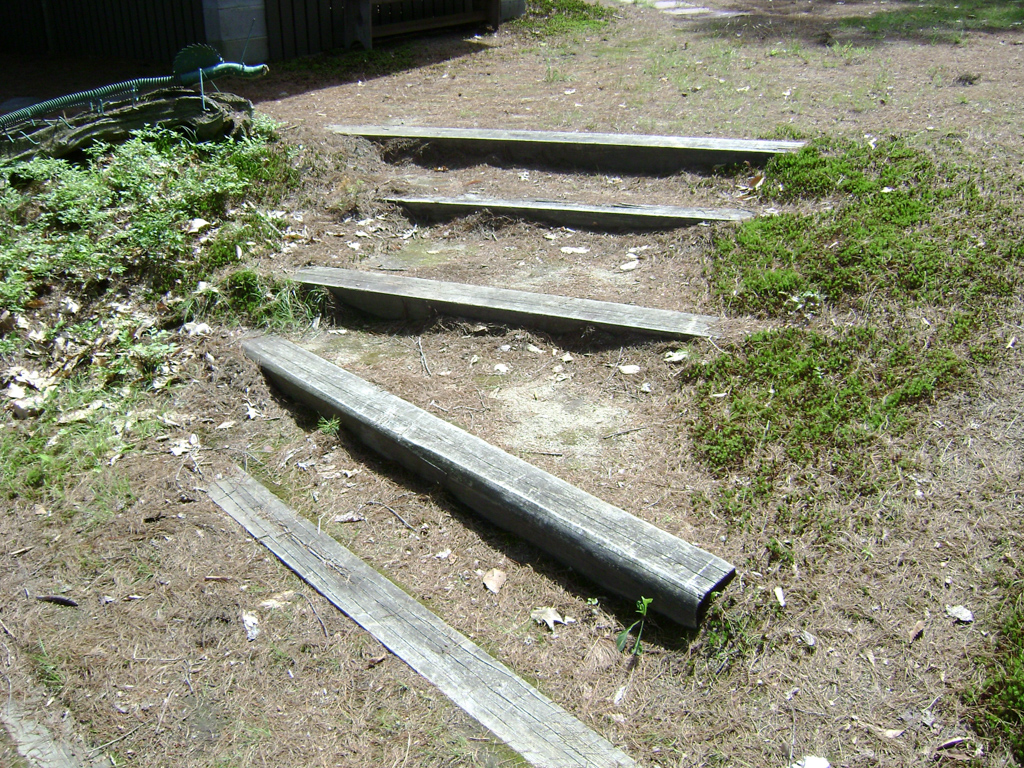
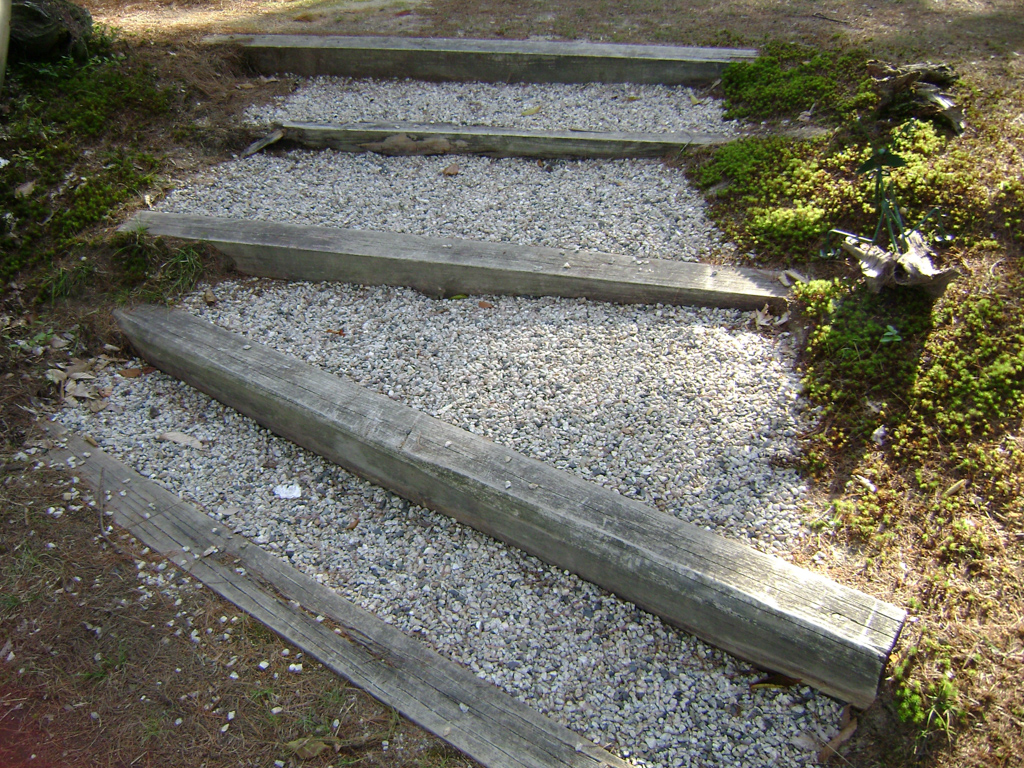
Before
After
Materials: Crushed stone and pea stone can be purchased from gravel pits. Contact your local Soil and Water Conservation District for suppliers of non-woven geotextile fabric. Other geotextiles, including landscaping weed barrier, can be substituted for smaller projects. Pressure treated timbers, cedar landscape timbers and steel rebar can be purchased from lumber and hardware stores. Some stores will cut rebar to the specified length for a small fee. Otherwise, rebar can be cut with a hack saw.
Maintenance: Replace rotten timbers. If the crushed stone or pea stone becomes filled up with sediment over time, remove, clean out sediment and replace.
Check out our technical assistance page to learn about getting a free erosion evaluation, and for more information on permitting.
Examples

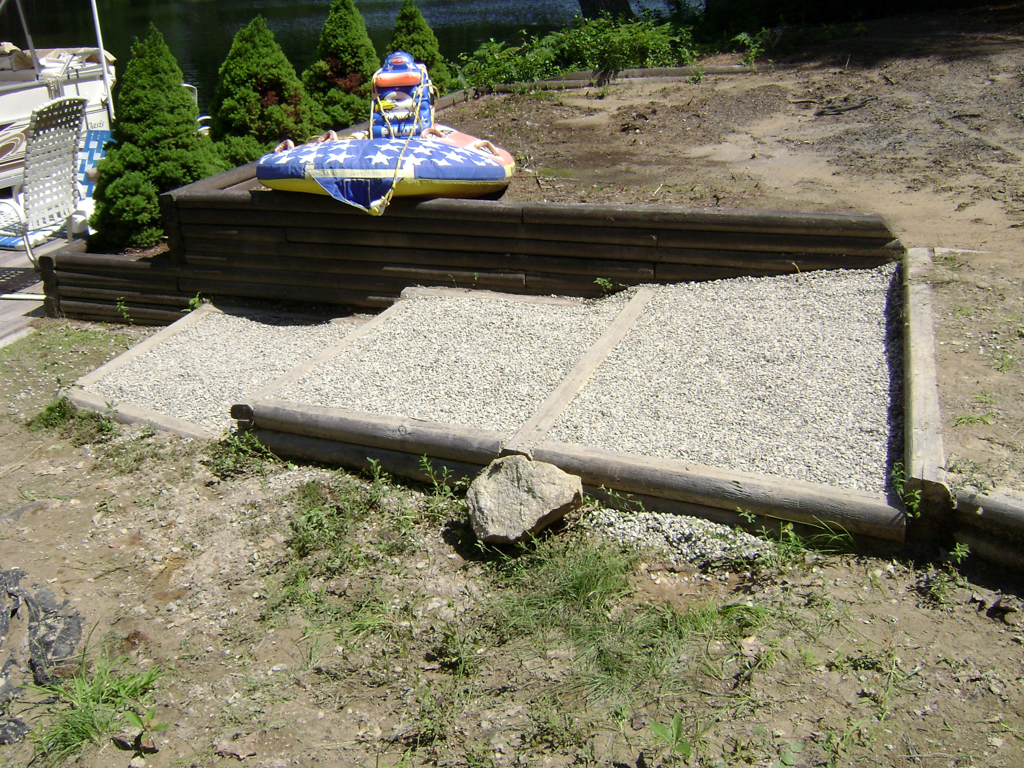
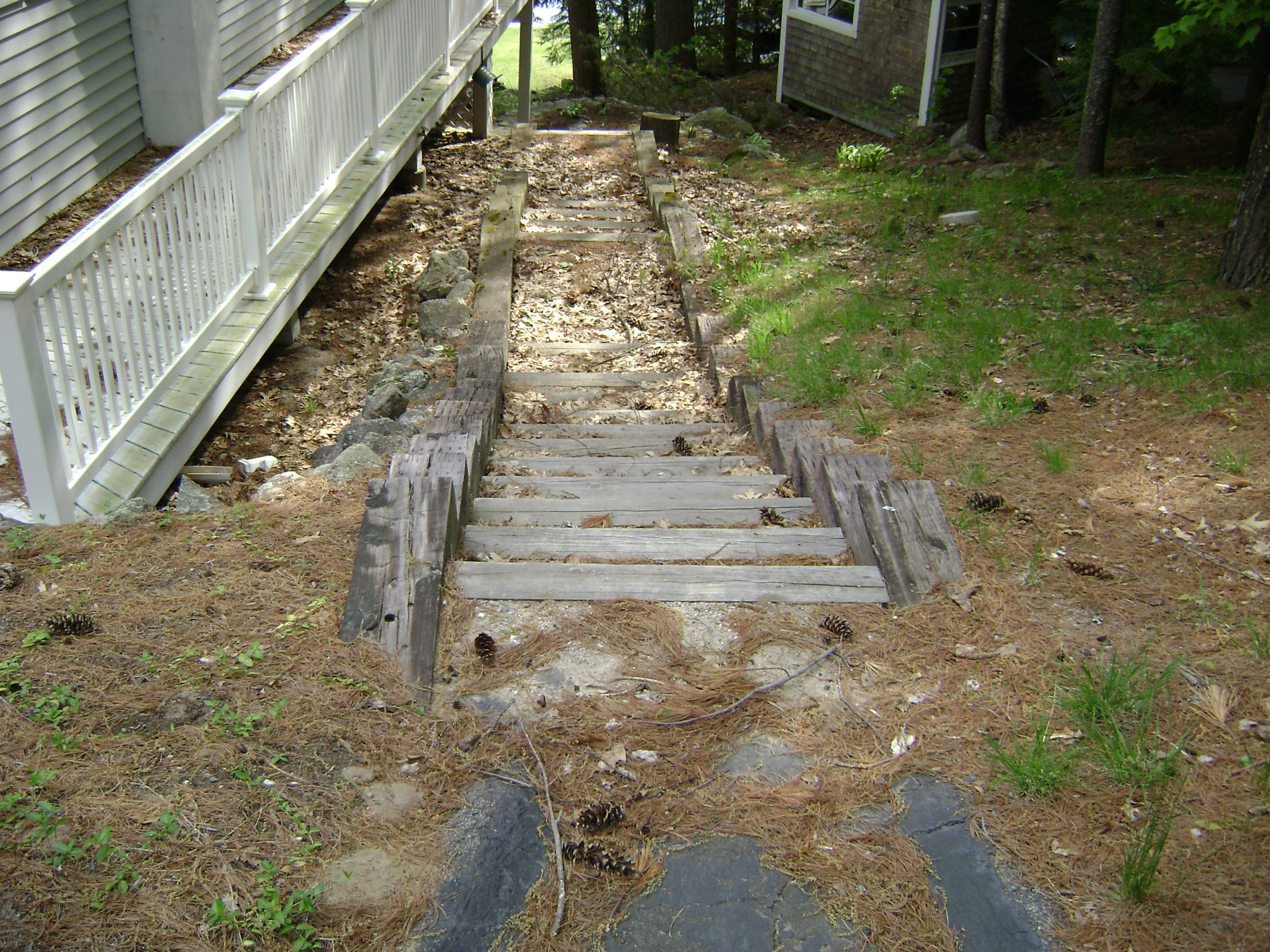
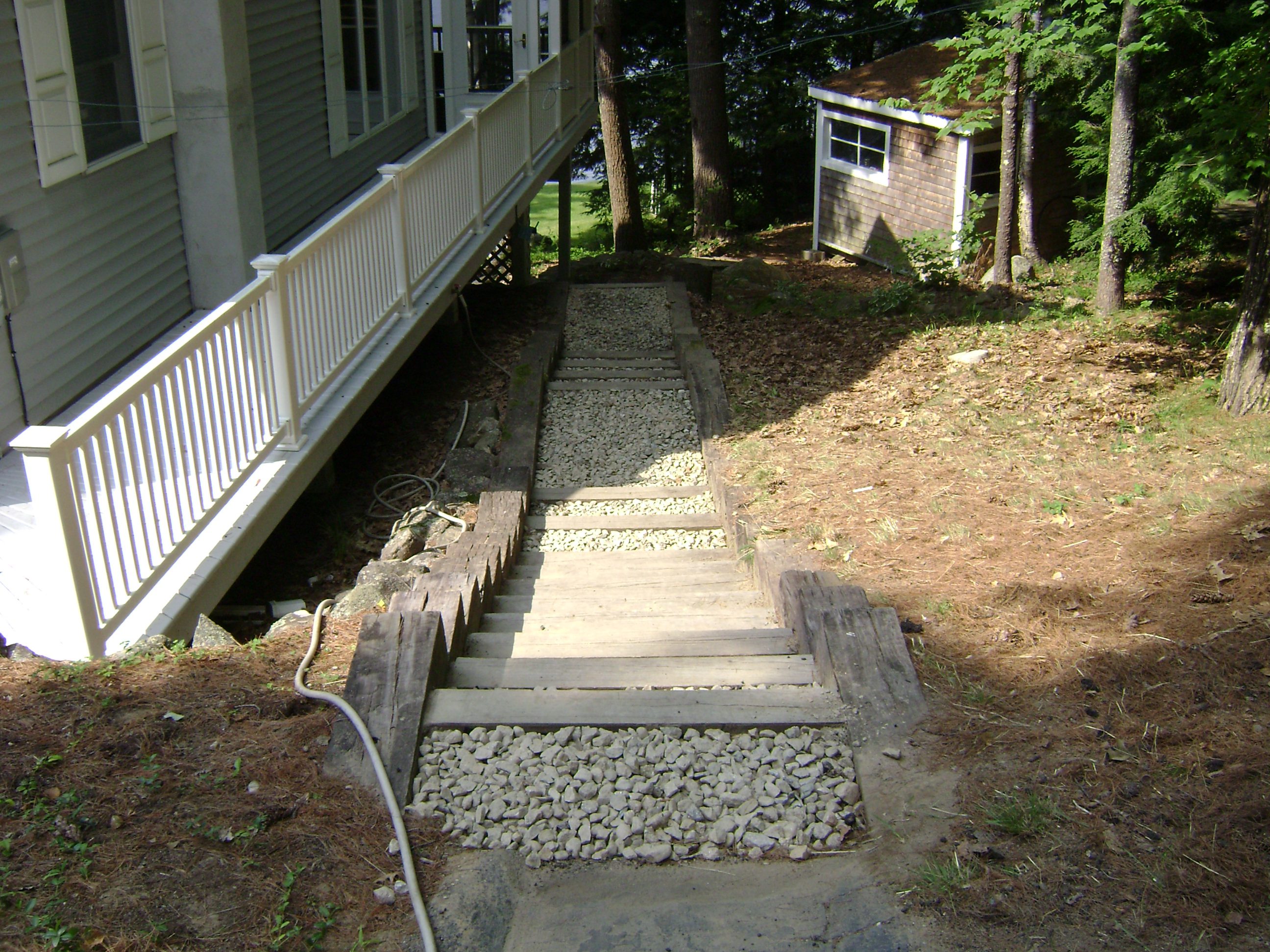

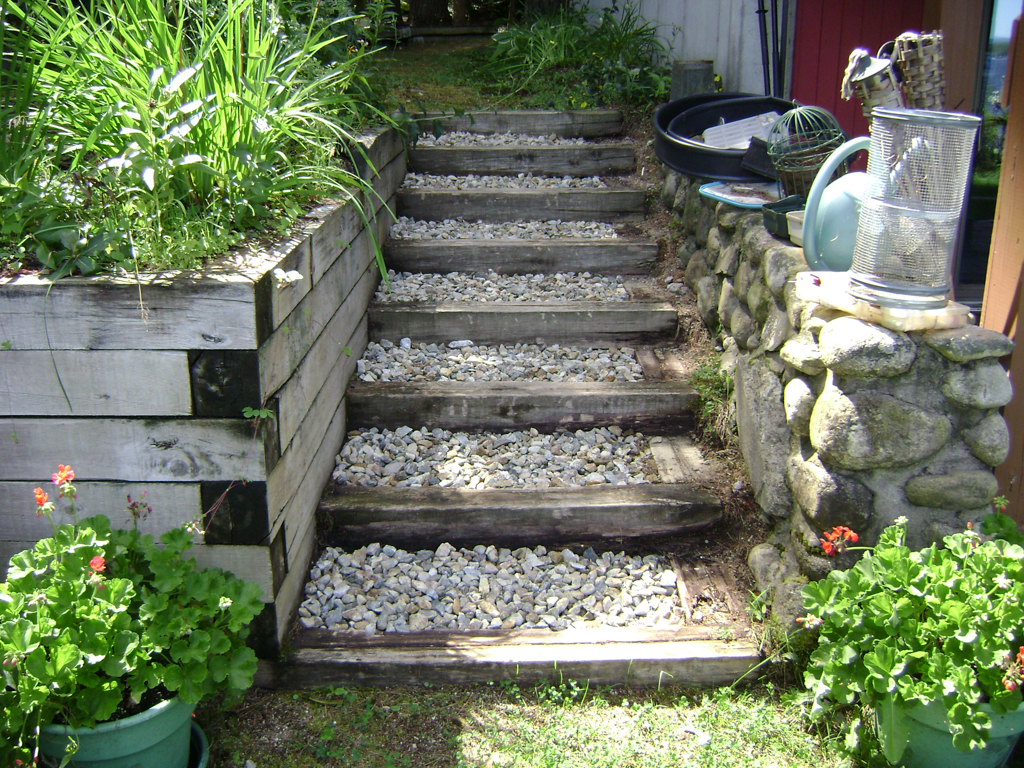

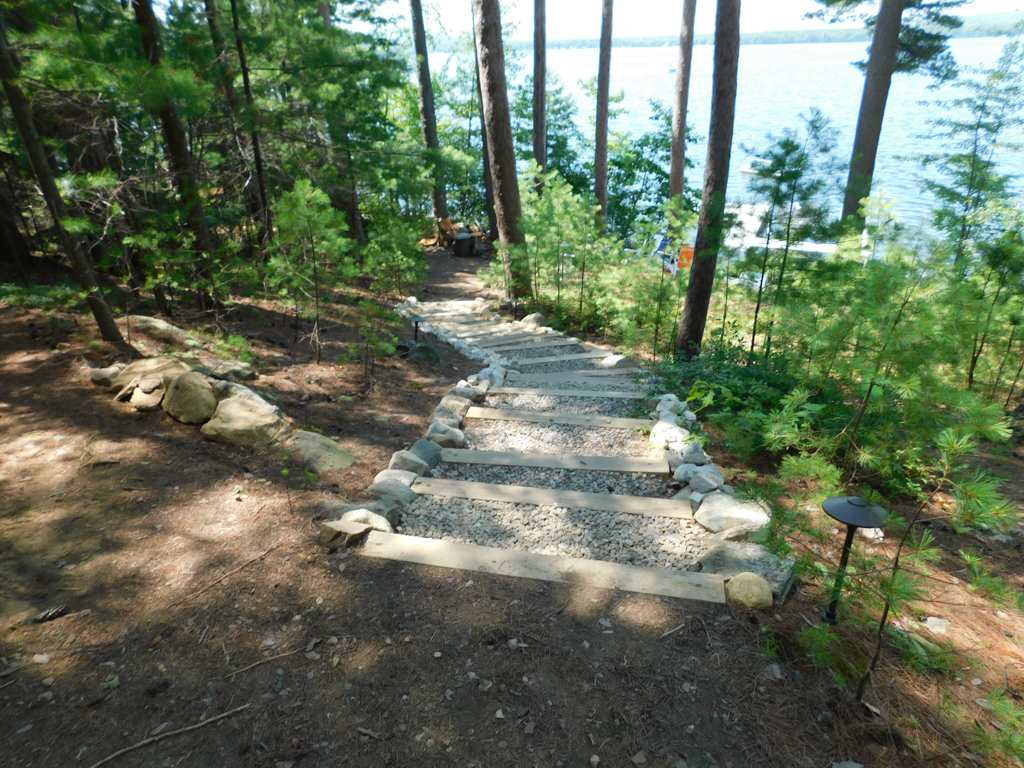
The Conservation Practices for Homeowners Factsheet Series are available at: Maine DEP or the Portland Water District. You can also find fact sheets at SOAK up the Rain NH.

